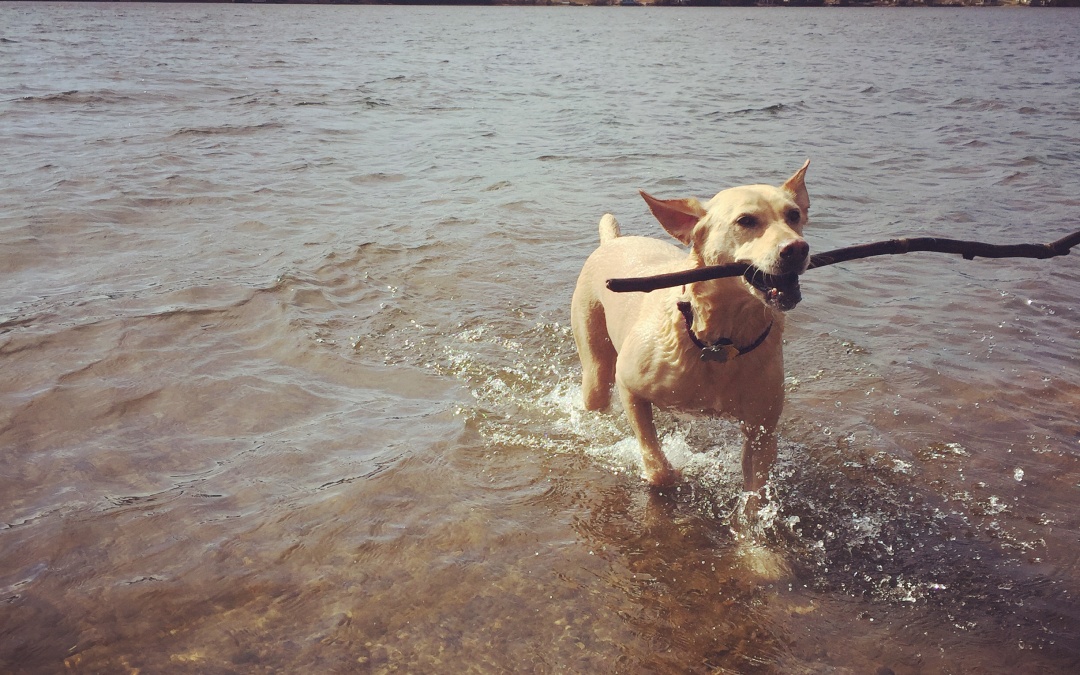With the warmer weather on its way, our furry friends are eager to start playing in the water. Swimming is a great activity for our dogs in the summertime to keep them active, exercised, and happy, but there are some dangers to be aware of. There are many living things, big and small, that benefit from the water sources in our environment. For example, there are two very tiny types of bacteria that can have a big impact on our pets. Dogs with leptospirosis may show signs of vomiting, diarrhea, a decreased appetite, increased thirst and urination, trembling or abdominal pain.
The Bacteria
Leptospirosis, a spirochete, is a bacteria that is eliminated in urine by infected domestic and wild animals. It can survive and remain infectious in our environment for months, mainly in water and soil. Infection can occur when dogs drink water that has the bacteria in it. Slow moving or stagnant water in or near rivers, lakes, or streams are the riskiest water sources. Leptospirosis infection can lead to kidney and liver damage and can even be fatal if untreated. Dogs with leptospirosis may show signs of vomiting, diarrhea, a decreased appetite, increased thirst and urination, trembling or abdominal pain.
Blue-green algae, a cyanobacteria, is found in many lakes in this area. Not all algae is toxic, but there is no way to tell the level of toxicity to the naked eye. The algae blooms will look like pea soup or spilled paint with foam along the shoreline. Not only can the blooms be blue-green in color like the name, but also purple, brown, or white. The algae produces two types of toxins which can affect the liver and the nervous system. These toxins are extremely potent and can cause clinical signs (symptoms?) such as vomiting, diarrhea, collapse, difficulty walking or collapse, trouble breathing and even death within minutes to hours of exposure.
What Should You Do?
If you notice any of the clinical signs above or know your pet has been exposed to these bacteria you should consult with your veterinarian immediately. If your dog swam in algae, if possible, wash them off with clean water and soap. Algae can cause illness in humans as well. You must wear protective clothing such as rubber cleaning gloves, an apron, and glasses. If you do not have these materials readily available you should go straight to the closest veterinary clinic. Your veterinarian will perform a physical exam and diagnostic tests. Hospitalization and intensive critical care may be necessary to help treat your pet.
What is Going to Happen to My Dog?
Treatment for leptospirosis generally requires hospitalization for a few days. Intravenous fluids, antibiotics, and supportive care will be provided. Prognosis is generally good for those cases that were diagnosed and treated early. There can be permanent kidney damage following infection which will require close monitoring and more frequent veterinary visits. Your veterinarian may elect to treat other dogs in your household even if they are not sick.
If your pet is showing clinical signs from blue-green algae toxicity the prognosis is poor. A physical exam and diagnostics will help your veterinarian create the proper treatment plan. Emergency stabilization and critical care will be necessary. Exposure to these toxins are almost always fatal even with the proper medical care.
Prevention is the best medicine!
Bacteria can be scary! But there are ways to protect our pups. Yearly vaccines are available that cover the main types of leptospirosis. Although it is still possible for vaccinated dogs to become infected, it is much less likely. Leptospirosis is zoonotic, meaning it can also infect humans. The main carrier of the bacteria is your pet’s urine. After starting antibiotics a very low level of bacterial shedding occurs. If your dog has been infected with leptospirosis, please contact your primary care physician to talk about further action.
One good thing about an algae bloom is that it is visible. Be sure to assess the water before allowing your dog to go swimming. Look for signs posted along the shoreline about possible algae blooms. The Vermont Department of Health website provides weekly summaries of lake conditions, tips, and pictures of the algae blooms.
Although the water can be home to harmful species, being well informed can help keep your family members safe, happy, and enjoying everything that Vermont has to offer!
Written By: Dr. Anne Culp

